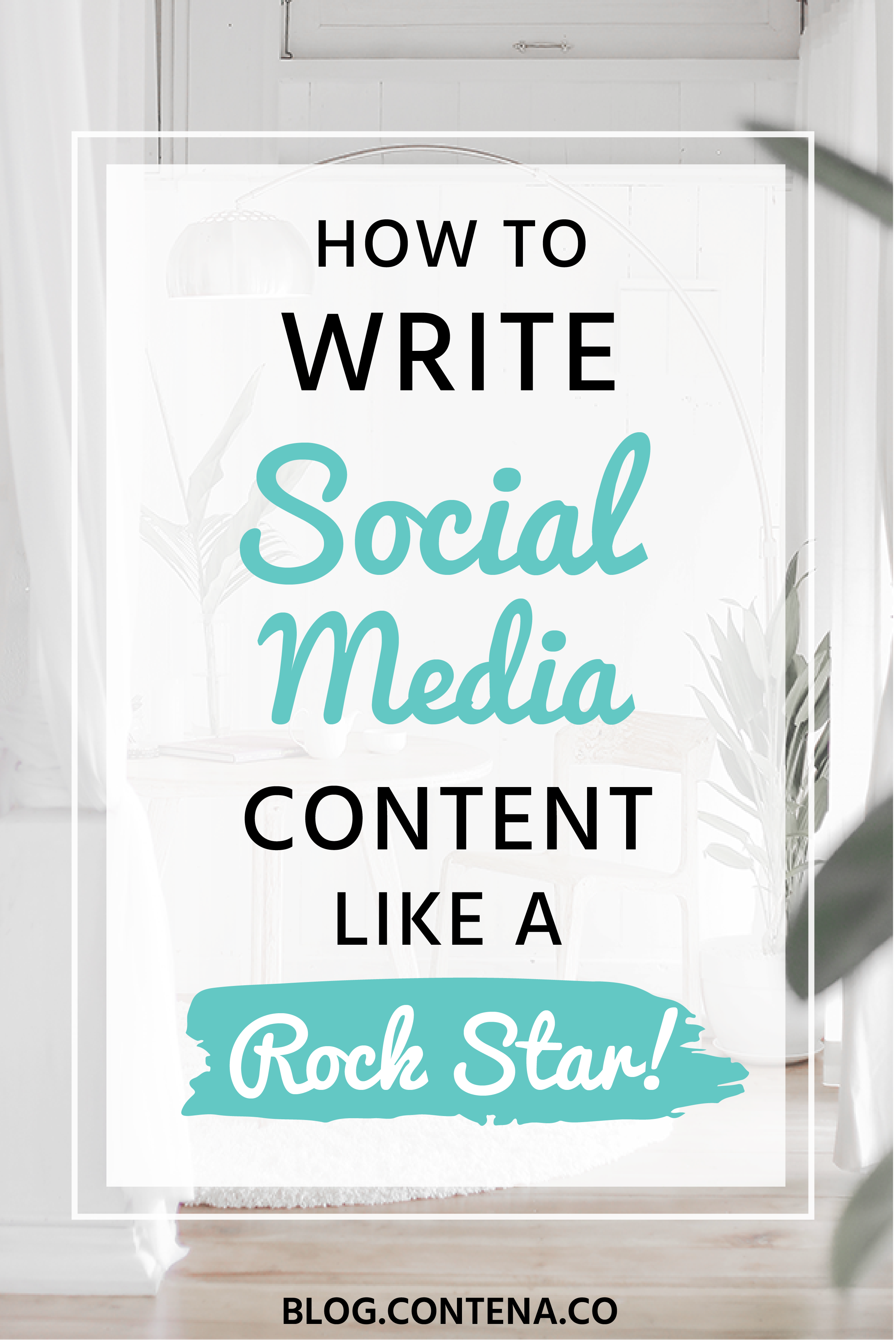There’s lots of buzz in today’s social media marketing community about visual content as the hot new tactic for attracting customers.
But without written communication that provides context to images, videos, and other updates, it’s impossible to connect with an online audience.
That’s why every company on social media needs great writing. And if you learn the art of writing well on social media, it opens up a new avenue for paying client work.
Potentially getting paid to write for a company on social media isn’t the only benefit – writing compelling posts, status updates, and messages on your own social profiles can actually bring new clients to you.
For both of these reasons, it pays to understand how to write well on social media. But each network has its own style and guidelines for written communication.
Here’s what you need to know to write excellent copy on the top social media networks for business:
With over 1.4 billion people logging onto Facebook every day as of 2018, there’s a great chance that part of your target audience is on Facebook. In his latest book Crushing It!, Gary Vaynerchuk calls Facebook, “the cost of entry to building a personal brand.” That statement applies to businesses too.
As the biggest and one of the oldest social media networks, Facebook is also one of the most varied – it has everything from images to links to live streaming videos.
Because of its diversity, a good Facebook post should have an interesting visual that will get people to stop scrolling through their news feeds and pay attention. But Facebook posts also need clear, concise writing to reinforce the messages they’re communicating.
Keys for writing well on Facebook
- Make it 80 characters or less. 40 to 80 characters is the ideal length of a text update that accompanies a link or visual content, according to marketing authorities like Buffer and HubSpot. If it’s a text-only post, you can go longer, but be brief with your words when sharing a link, image, or video.
- Test different formats. Facebook’s different types of posts allow you to vary your writing. Some use the video sales letter format, with a long caption underneath a video to convince an audience to buy or sign up for something. You can also try a shorter post that asks a question or shares a snippet of a longer video or blog post. Vary it up to see which style works best.
- Capturing attention is key. Think of Facebook as a digital highway. As your audience scrolls down their newsfeed, they have as many sights competing for their attention as they would in a car on the interstate. Your writing should grab that attention and quickly convey a message that gives them something of value – whether it’s a link to helpful content, inspiration, or even a quick laugh.
Twitter was once notorious for a big limitation to writing posts on the network: 140 characters or less.
Recently, the popular social network of over 300 million people lifted that famous restriction, allowing all users to tweet up to 280 characters. Does that mean you should tweet longer?
Actually, no. The average tweet length is still about 50 characters – the exact same as it was when users could only write 140 characters or less.
Because of its quick, bite-sized nature, Twitter is a place where unique brands and personalities can shine. If you’re good at crafting one-liners and clever responses, Twitter could be a great fit for your writing abilities.
Keys for writing well on Twitter
- Use hashtags but don’t overdo it. Besides the restrictive tweet lengths, hashtags are the other key feature that defines Twitter. A well-placed hashtag or two can help you join in on almost any conversation or find the right people, but use them sparingly. You don’t want to be one of those annoying tweeters that has fifty hashtags on every post. Look for the two or three hashtags most relevant to your target audience using a tool like Hashtagify.
- Add personality – carefully. Whether writing for a personal profile or a business, Twitter is the best social media network to let some personality shine through. If you can think of a funny, well-timed joke, it’s a great way to stand out. The Wendy’s Twitter account is a great example of this, as is social media director Zach Seidel, whose clever barbs helped grow UMBC’s Twitter account from 5,000 to over 70,000 followers in 24 hours after a huge upset win by the school’s basketball team. One caveat – be careful your humor doesn’t offend anyone. If you’re unsure whether or not a tweet would be well-received, err on the side of caution and skip it.
- Discuss live events. Twitter is great for providing live, bite-sized updates of company events and parties, product launches, or even major national happenings like sports games and award shows. If you’re the one hosting the event, remember to create a unique hashtag that attendees can use to interact with others.

LinkedIn is all about being professional. You want to leave the personal stuff out of it – it’s not the place for pictures of your lunch or your family cat.
To succeed on LinkedIn, you have to provide value in a professional context. That means helping people with their work responsibilities by either sharing your own insights or curating other people’s content for your audience.
LinkedIn is also a great place for repurposing longer articles (like from your company blog or newsroom site). Unlike many other social sites, LinkedIn lets you republish the full text of a longer article while still linking back to the original source.
Keys for writing well on LinkedIn
- Post how-to lists, case studies, and practical lessons. Anything you put on LinkedIn should be actionable, meaning your audience can apply the lessons or tactics they learn in their own businesses.
- Use small snippets. If you or your client has a longer eBook or research study, post bite-sized samples to attract attention. These could come in the form of an interesting quote or an unexpected statistic or data point.
- When you write long-form content, share it on LinkedIn. You might need to adjust the original formatting so the content makes sense for the network’s format. Remember to also link back to your website or the original publication where the longer piece was published.
Why do you need to know about writing for a social media platform based on images?
One word: Captions. They are extremely powerful, and if everything else is equal, can set you and your posts apart from others in the same industry/field.
Consider Dwayne “The Rock” Johnson, @therock on Instagram. He has over 100 million followers, putting him right up there with mega-influencers like Kim Kardashian and Selena Gomez.
His pictures are certainly polished and presentable, but from a visual perspective, they aren’t a massive leap upwards in quality from a typical Instagram influencer with a few million followers.
So what’s the difference?
Aside from Johnson being a world-famous actor, of course, one thing that sets him apart is his lengthy captions. Whether they are dedicated to his children, his new daughter, or coworkers on his latest film, Johnson’s captions are heartfelt and authentic – which is exactly why they get results.
He reportedly charges $1 million per post to promote a movie on his Instagram account.
Keys for writing well on Instagram
- Keep the important stuff up top. Instagram captions cut off after about three lines, so it’s critical to have the most important info in the post right in the beginning. You can also use this part of the post as a hook to get people to read further.
- Use hashtags. Like Twitter, hashtags are a great way for you to connect with your target audience on Instagram. Just remember to keep them below your first three lines (unless they fit naturally into your caption) and don’t overdo it – between 2 and 8 hashtags is the ideal length, according to HubSpot.
- Consider your post like a meal. The images and videos are the main course – they’re what determine whether a user enjoys the experience or not. Words are like a powerful side dish that adds additional flavor and enjoyment. But without interesting visuals, words alone aren’t as enjoyable – imagine eating a big plate of french fries without the burger!
There are many other social networks that require writing, but these four are most commonly used by your clients’ target audiences and the companies who need to hire skilled freelance writers.
No matter which social media site you’re using, if you know your platform, know your audience, and track your results to improve future posts based on the data, you can craft powerful words that move the needle for your own business and your clients.










